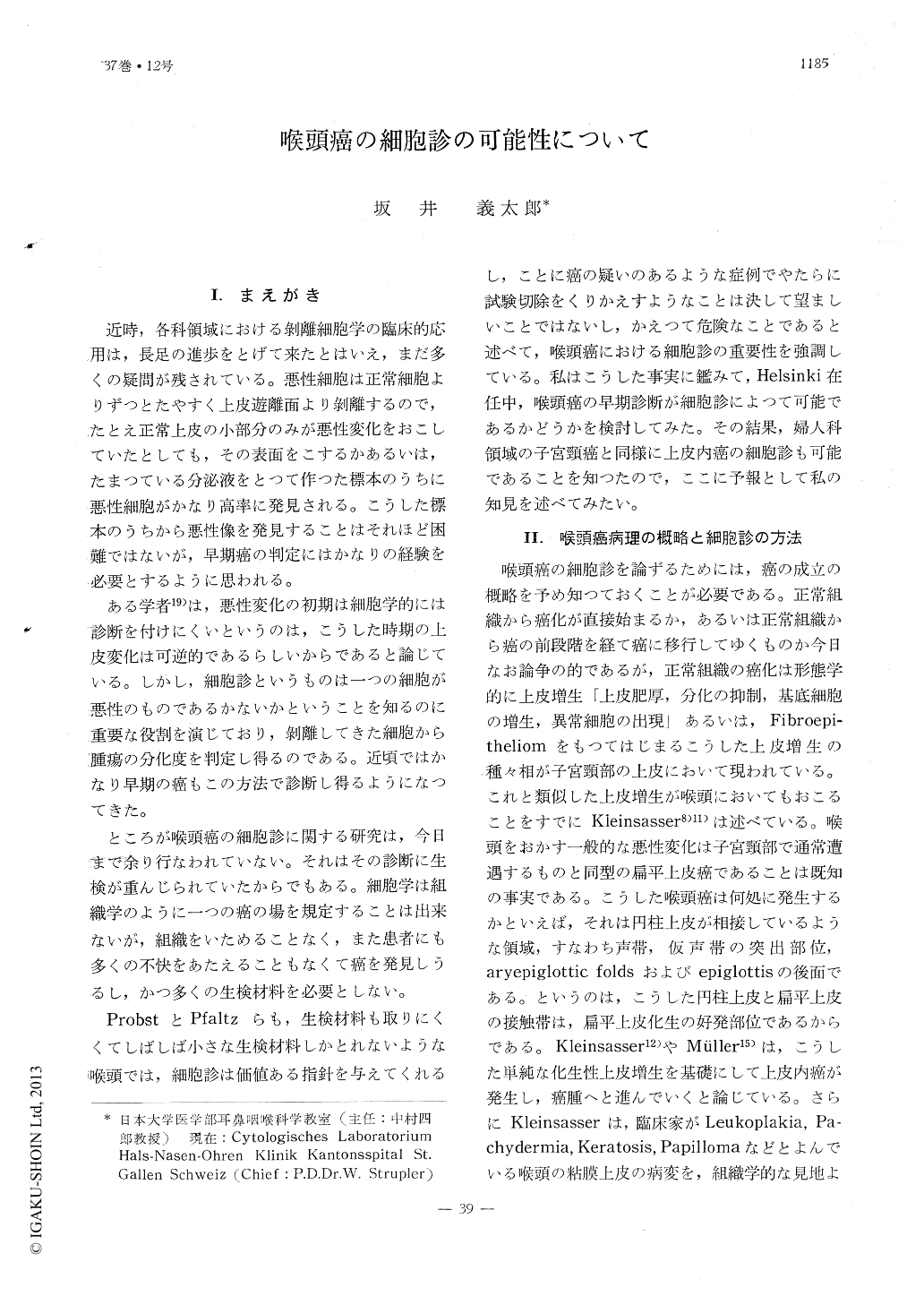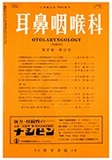Japanese
English
- 有料閲覧
- Abstract 文献概要
- 1ページ目 Look Inside
Ⅰ.まえがき
近時,各科領域における剥離細胞学の臨床的応用は,長足の進歩をとげて来たとはいえ,まだ多くの疑問が残されている。悪性細胞は正常細胞よりずつとたやすく上皮遊離面より剥離するので,たとえ正常上皮の小部分のみが悪性変化をおこしていたとしても,その表面をこするかあるいは,たまつている分泌液をとつて作つた標本のうちに悪性細胞がかなり高率に発見される。こうした標本のうちから悪性像を発見することはそれほど困難ではないが,早期癌の判定にはかなりの経験を必要とするように思われる。
ある学者19)は,悪性変化の初期は細胞学的には診断を付けにくいというのは,こうした時期の上皮変化は可逆的であるらしいからであると論じている。しかし,細胞診というものは一つの細胞が悪性のものであるかないかということを知るのに重要な役割を演じており,剥離してきた細胞から腫瘍の分化度を判定し得るのである。近頃ではかなり早期の癌もこの方法で診断し得るようになつてきた。
Recently, the exfoliative cytology has been playing an important role as one of the method of early diagnosis of cancer not only in the clinical field but also in the field of public health.
In the otolaryngological field, however, there have been only few reports concerning the cytological diagnosis of laryngeal cancer bec-ause of that the biopsy has been regarded as the most conclusive method up-to-date.
Following the careful study, the author has tried to solve the question, whether or not the exfoliative cytology could be the valuable method for diagnosis of laryngeal cancer.
As the result of this study, it has been obtained that it is possible to predict the several aspects in cancerous and precancerous conditions following the detailed analysis of cellular abnormality of the exfoliated laryn-geal cells.
The most useful classification for the anal-ysis of atypical epithelial cells described by Kern is as follows:
1) Pseudo-dyskaryotic (dysplastic) cells
2) Dyskaryotic cells
3) Uniform atypical cells
4) Polymorphous atypical cells
These exfoliated pathological cells are sign-ificant for the prediction of cancer such as ; Pseudodyskaryotic cells indicating dysplastic atypical epithelium, dyskaryotic cells indicat-ing carcinoma in situ, polymorphous atypical cells indicating invasive cancer.
As based on the criteria mentioned above, cytological pictures of exfoliated cells taken from the larynx in 50 cases were analysed. All of these materials were collected at the department of Otolaryngology, Helsinki Unive-rsity Hospital. Of all cases, 4 had doubtful atypical cells in their smears and were dete-rmined histologically as carcinoma in situ. Two of these cases showed no clinical featureof malignancy. Of 32 cases of laryngeal cancer detected by biopsy, 27 cases had uniform and polymorphous atypical cells in their smears. The accuracy of cytological diagnosis of can-cer in the larynx is 84.4 %. The smear that contains atypical cells, pseudodyskaryotic cell s or dyskaryotic cells, can be derived from those cases which are chronic laryngitis, polyp, pachydermia, leukoplakia and papilloma.

Copyright © 1965, Igaku-Shoin Ltd. All rights reserved.


